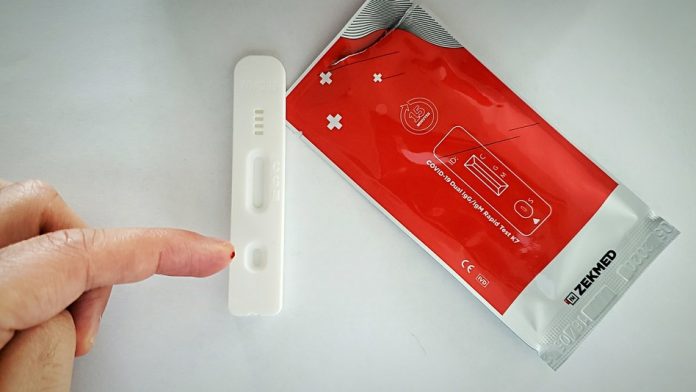The Ontario government is enhancing COVID-19 testing by expanding the number of testing locations and making it more convenient to access publicly funded testing for those who need it. These new testing options are being deployed as more people head indoors and attend family gatherings during the colder winter months.
“While vaccination remains the best way to protect against COVID-19, testing remains a key part of our pandemic response by detecting cases earlier and providing an additional layer of safety,” said Christine Elliott, Deputy Premier and Minister of Health. “As we head into the colder months we are enhancing our testing strategy to ensure that every Ontarian, regardless of where they live, can access testing closer to home when they need it and get a test result as quickly as possible.”
In the coming weeks, the government will be deploying several testing strategies across the province to increase access to testing and mitigate the increased risk of transmission over the winter months. These include:
- Access to publicly funded COVID-19 PCR specimen collection in select pharmacies for all individuals eligible for testing, including symptomatic individuals and close contacts. Pharmacies must choose to opt-in to this service and will be required to follow stringent infection prevention and control measures to protect staff, patients and customers against COVID-19.
- Providing take-home PCR self-collection kits for eligible individuals, allowing them to pick up their free test and drop off their specimens at participating pharmacies across Ontario, providing a more convenient and consistent testing option in rural and remote areas.
- Expanding ID NOW rapid PCR testing to select assessment centres and pharmacies across Northern Ontario in the coming weeks, increasing access to convenient local testing and allowing individuals to get quick results in these communities.
- Bringing asymptomatic testing directly to Ontarians with pop-up testing sites in higher-traffic public settings to provide vaccine education and help reduce the risk of transmission over the holidays. Starting in mid-December, testing options will be offered to people without symptoms in various settings across the province. Sites will be announced in the coming weeks and will be selected based on a risk analysis of hot-spot zones.
Building on Ontario’s plan to keep schools safe and open for in-person learning, specific testing measures will also be implemented for school communities:
- Providing take-home PCR self-collection kits to all publicly funded schools for students and staff who are eligible for testing as per the provincial testing guidance. All private and First Nation schools have also been asked if they would like to access take-home PCR self-collection kits. Students will be able to drop off their specimens at a convenient community location, including participating pharmacies across Ontario.
- Distributing 11 million rapid antigen screening tests to all public schools ahead of the December break to add an additional layer of protection over the holiday period and as students return to school in January. Each student will take home a pack of five rapid antigen tests to use over the holidays and throughout the return to in-person learning. All First Nation schools will also have the opportunity to participate.
“Ontario’s plan for safer schools has delivered improved ventilation, supported high vaccination rates for youth, and restored extra-curricular activities and sports – all critical to student mental and physical health,” said Stephen Lecce, Minister of Education. “By expanding testing options over the winter holiday, putting in place additional safety measures, and returning to normal timetabling, we are taking action to ensure schools reopen safely while supporting a more positive learning environment for students.”
As the province moves into the winter season, increased contact indoors among staff, parents and children may present an increased risk of COVID-19 transmission in elementary schools. To support safer schools while Ontario’s vaccination rollout continues, the province is introducing updated guidance, including short-term measures designed to limit the number of contacts for unvaccinated populations such as:
- Reminding school boards to communicate to staff, students and families about established federal international travel policies in advance of the December break in an effort to prevent absences in January related to post-travel requirements.
- Virtual-only school-wide assemblies for elementary schools starting in January 2022.
- Restricting lunches/breaks to classroom cohort when indoors where distancing between cohorts cannot be maintained in elementary schools.
In preparation for the second half of the school year, the government is providing school boards with access to the remainder of the $1.6 billion in COVID-19 resources announced in May 2021 to help keep schools safer and open. Additionally, school boards will be permitted to access up to two per cent of their reserve funds to further support safety measures.
With new guidance and enhanced testing options in place, secondary schools will also be permitted to resume a regular timetabling model of four courses a day starting February 2022. Doing so will provide a more normal, in-person learning experience for students and promote positive mental health and is supported by high rates of vaccination amongst youth aged 12 to 17, which have helped reduce the number and frequency of outbreaks among high-school aged students.
“Getting vaccinated, adhering to public health measures and maintaining consistent and timely access to testing will be key to responding to potential outbreaks or surges,” said Dr. Kieran Moore, Chief Medical Officer of Health. “As we prepare to head inside over the winter months, and while we have paused the next step of our reopening plan out of an abundance of caution, enhancing our testing strategy is critical to protect our hospital capacity, health care resources, and the progress we have made together so far in learning to live with and manage COVID-19 in the long term.”
As COVID-19 continues to evolve, Ontario’s testing strategy will remain responsive to any scenario to ensure that anyone who needs a test, as outlined in the provincial testing guidance, can get a test free of charge in a timely manner with quick access to their results.
Quick Facts
- Vaccination against COVID-19 is the most effective way to prevent the spread of the virus. While testing does not prevent someone from getting COVID-19, access to timely and convenient testing is critical in helping to ensure quick detection and isolation of positive cases.
- On November 15, the government, in consultation with the Chief Medical Officer of Health, paused the lifting of capacity limits in remaining higher-risk settings as outlined in A Plan to Safely Reopen Ontario and Manage COVID-19 for the Long-Term. This is being done out of an abundance of caution as the province monitors public health trends.
- Ontario is a national leader in testing with over 19 million lab-based PCR tests processed to date and has the capacity to complete over 100,000 lab-based PCR tests per day. As of November 17, 85.2 per cent of tests were processed within one day.
- Ontario is also a national leader in the deployment of rapid tests. To date, over 30 million rapid antigen tests have been deployed across Ontario through the Provincial Antigen Screening Program to over 37,000 sites.
- As part of the 2021 Budget, Ontario is investing over $3.7 billion over two years, including $2.3 billion in 2021-22, in a comprehensive testing strategy to ensure timely access to testing, including targeted testing for vulnerable communities and expanding the capacity to process COVID-19 tests effectively.
- As of November 17, nearly 85 per cent of youth aged 12 to 17 have received a first dose of the COVID-19 vaccine and more than 80 per cent have received a second dose.
- 99.9 per cent of publicly funded schools in Ontario are currently open.
- In May 2021, Ontario announced that it is providing temporary COVID-19 resources of more than $1.6 billion to school boards throughout the 2021-22 year. This is helping school boards with a wide range of supports for student mental health, the hiring of additional staff, school-focused nurses in public health units, remote learning technology, and health and safety measures in student transportation.
- The government is providing school boards with access to the remainder of COVID-19 resources announced in May 2021 to ensure schools have access to sufficient funding to keep their schools safer in the second half of the 2021-22 school year. Additionally, it will permit school boards to access up to two per cent of their reserve funds to further support safety measures.








